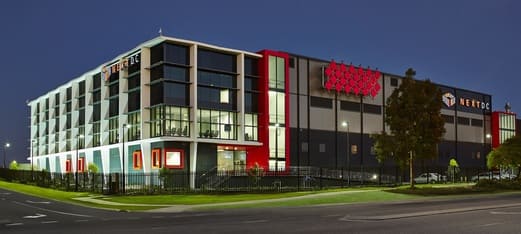By Steven Cvetkovic – Product Manager, MCX
When you think of ‘downtime’ at home, a few themes probably come to mind: rest and relaxation, time with family, whatever it is that makes your life really worth living.
Put the word in a business context, however, and the effect is likely to be the complete opposite:
Downtime in our mission critical operations. Chaos, disruption, money, disaster. HELP!
Does that seem a little dramatic? It shouldn’t. In our always-on, interconnected digital world, the people who rely on what you deliver have high expectations. And when your mission critical processes fail, the ramifications can be dire.
When customers tell us they have reached the point where any unavailability of teams and processes is not an option, we respond with a simple question. Are you managing risk in your mission-critical operations with a short-term mindset, or with a long-term view of the health and wellbeing of your organisation?
Think of it as physical fitness for your organisation. Any personal trainer will tell you the folly in setting out on a fitness program based solely on short-term gains. It’s better to aim for a healthy, high-quality life for the long-term.
Why should it be any different when it comes to managing the overall health and performance of your organisation’s critical functions?
Short term v long term mindset – what’s the difference?
I’m sure most of us would like to think we have a long-term (not short-term) mindset. However, it’s less common than you think. Or perhaps the bones of long-term planning are in place, but there’s often a gap (in many cases a chasm) between planning and bringing it to life.
If this sounds familiar, there is a solution – and it all starts with a mindset shift in how you manage risk in your operations. Critically, there’s a subtle but important difference between the terms “business critical” (which many of us are familiar with) and “mission critical” (which more of us need to be familiar with).
Business critical processes or tasks are essential for smooth operations of core business functions. Examples include sales, marketing to name a few.
Mission critical processes are those operational tasks that are essential for the organisation’s survival. This would include core activities or outcomes such as just-in-time manufacturing, back office, mining, logistics, mission command and control support, and utilities/critical infrastructure.
Both are important, but one has a significant edge. You can usually recover when business critical processes fail. On the other hand, and depending on the nature of your business, failure of mission critical business processes can lead to loss of life/assets/revenue, reputational damage, economic or societal impacts, or even closure.
How do I know if there’s a problem with my mission critical mindset?
Mindset is a tricky thing to capture, but there are two critical clues that your approach to risk management is stuck in the past:
- Your leadership team is still talking in terms of business continuity/disaster recovery planning, rather than holistic risk management and subsequent planning for the ‘event’.
- You have documented plans in place to manage interruptions to systems and infrastructure, however your planning documentation around the people and processes who interact with them is less substantial.
If that rings a bell, then there is a high chance that your mission critical teams will not have reliable access to secure, powered and interconnected critical workspaces and digital services used by teams operating critical processes, in the event of an emergency.
If so, your mission critical functions are under threat, and that could represent big problems based on unacceptable risks that are not clearly understood.
How can I avoid mission critical risks?
Once your internal mindset toward risk has shifted, it’s time to act. The next step is to create the environment for your mission critical teams to function with near-seamless uptime, no matter what the challenges in the external environment.
There are a couple of ways to do this. You can do it yourself, which is a major undertaking for any organisation that isn’t already in the critical infrastructure business. It’s expensive, it’s a distraction from your core business and you probably won’t end up with the levels of performance and resilience required to maintain around-the-clock operational excellence and resilience.
Or you can partner strategically with someone who lives and breathes fault tolerance around power, security and interconnection (read: manages premium and critical digital infrastructure) to manage the mission critical environment you need to manage risk. This allows you to:
- Create an environment for your core operations centres, teams and processes, which is scalable, customised to your unique requirements and well-equipped with premium facilities.
- Place those teams straight into highly secure, fault-tolerant facilities with seamless interconnectivity to an established ecosystem of clouds, carriers and other digital service providers.
- Claim the unparalleled competitive advantage that accompanies “always on” operations.
Are you ready to rethink mission critical?
If you’re ready to avoid the disaster of mission criticality risks and deliver on your purpose without interruption, we can help.
Our mission critical operational spaces provide a platform for your core operations, teams and processes to function with the same level of resilience you expect of your IT platforms. We can also work with you to help define what’s critical to your organisation’s mission and materialise your strategy to achieve “always on” operational teams, systems and processes.
To find out more, take the first step and download our report Rethink Mission Critical: Mitigating the Risks of Operational Availability today.


